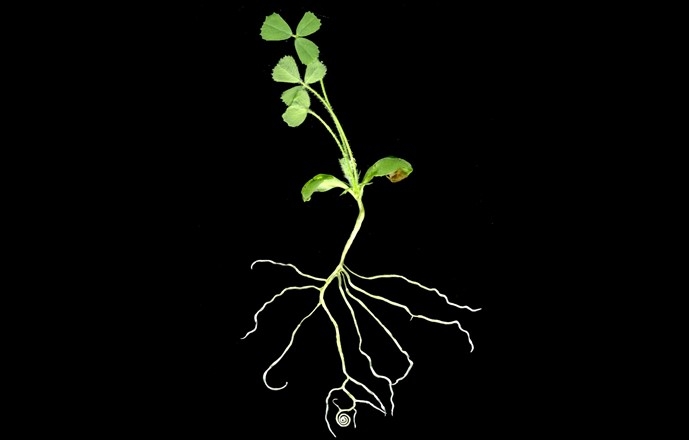DblRoleNH4 - Exploring the dual role of ammonium in nodulation in the model legume Medicago truncatula
One of the most pressing challenges of our time is the establishment of sustainable production systems of high-yield crops that meets the nutritional needs of the human population. High-yield crops require large quantities of nitrogen (N), which is present in limiting amounts to support their yields in most soils. This leads to an excessive global application of N-chemical fertilizers in agricultural land that often causes detrimental effects on the environment. With the world population expected to reach 9.1 billion by 2050, the demand for food will continue to rise and if the current agricultural practices remain unchanged, so will the adverse impacts of chemical fertilization on the environment and human health. Therefore, it is imperative that food security is built on environmentally sustainable systems.
Legumes have the potential to contribute to sustainable food production in two ways. First, legume-associated atmospheric-N (N2) fixation (LNF) naturally enriches the N-content of the soil for other non-legume crops in rotation or intercropping systems. Secondly, grain legumes produce seeds with high-protein content, representing a healthier and less polluting alternative source of proteins than animal meat. But, high-yield legumes have high-N requirements and the exclusive dependence on LNF-derived N has been shown to compromise crop productivity. Thus, despite the obvious benefits of LNF legume crops are often cultivated with high-N supply, which inhibits the development of root nodules, the special organ where N2-fixation takes place. In some species though, such as the model legume Medicago truncatula, low-levels of ammonium, but not nitrate have been shown to stimulate nodulation.
We postulate that LNF can be improved under low ammonium supply providing that: external ammonium is absorbed, nodulation is not negatively affected and nitrogen-utilization (or assimilation) efficiency (NUtE) increases. Breeding for nodulation-tolerance to external ammonium using innovative technologies could significantly contribute to lowering the agricultural dependency on N-fertilizers. However, to achieve this goal we must first elucidate the molecular mechanisms underlying the ammonium-control of nodulation.
In this project we propose to: 1) understand how ammonium regulates nodulation, by characterizing the effects of different ammonium concentrations on nodulation-traits and on the early steps of root nodule developmental processes in M. truncatula; 2) to evaluate whether there is variation of nodulation traits and nitrogen-utilization-related traits in response to ammonium within the M. truncatula germplasm and 3) to identify changes in transcript expression of key peptide hormones during the early phase of symbiotic interaction in response to ammonium.
State
Ongoing
Proponent Institution
Associação BIOPOLIS (CIBIO-InBIO)
Funded by
Fundação para a Ciência e a Tecnologia (FCT)
Dates
2022
Reference
EXPL/BIA-FBT/1169/2021



